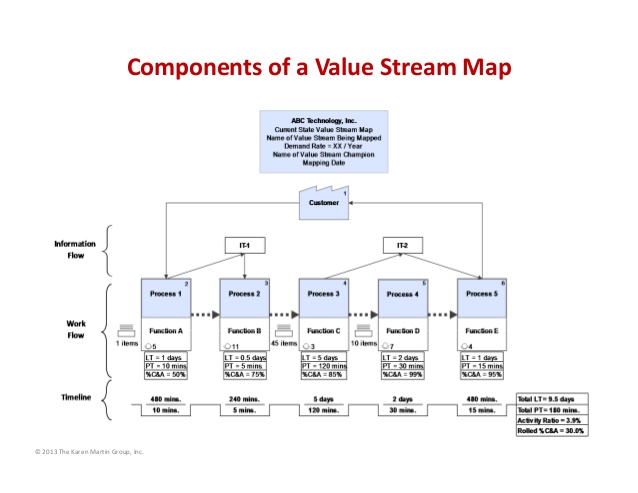I confess, Value Stream Mapping as a technique is something I already do with clients and I was reading this book mostly to make sure that I could say that I did (and now it’s on the Internet!). I will say that after being taught value stream mapping primarily as it relates to the DevOps movement and CI/CD pipelines, I was surprised to see how general the approach is. It seems like it would be really valuable for enterprises to do in areas outside of manufacturing (it’s based on Lean and started as one of the Toyota techniques) and IT. Maybe someday I’ll focus more on my MBA and less on my Comp Sci background and actually use it that way.
In this book “review”, I thought I’d spend some time in this blog post talking about the nuggets throughout the book that are a bit different when our team looks at creating a value stream to find opportunities for IT Automation. Feel free to leverage this in your business, or give us a call and we can help you get started!
First of all, we are usually doing a couple Value Stream Maps in our spare time in the first week of an Ansible Tower Foundation engagement. While also installing Ansible, connecting it to our client’s Git, Active Directory, Credential Management, etc… Consequently they are usually a lot less involved. This different results in a few big changes:
- The scope has to be different. The book talks about focusing on customer value streams being from “ring to ring” (from the phone call to order to the ring of the cash register). We still like to focus on this, but we often take IT Operations customers ring (a ServiceNow request to get a new VM) to service fulfillment (a notification to the user that they can log in).
- The session itself is shorter. I like to try to keep it to either one hour or two depending on the complexity. This allows for nice crisp time keeping. 10 minutes to intro the concept, 20 minutes for current state, 10 minutes to brainstorm opportunities for improvement, 20 minutes for future state.
- I think the charter becomes MORE important when you want to do a short session. It is important to have your sponsor identify the limitations of the exercise and the precise scope. This will limit wasteful conversation during the workshop.
Since our focus is typically on finding out how best to improve an IT Operations value stream via automation, we are looking for slightly different things in the value stream map:
- We do not limit ourselves in looking only for automation opportunities. We are looking for all manner of improvements… avoiding batching, identifying opportunities to run in parallel, etc… It’s not our goal to fix those as part of the project (though IBM has some excellent process consultants). It’s merely our goal to avoid the investment of automating a process that shouldn’t exist at all or is not a bottleneck.
- The Gemba walk is usually not a physical one. I like to have actual operators walk an actual ticket on screen where possible. In longer running processes it may be constructive to view several tickets in different phases.
- We use all of the resulting automation “kaizens” to start our clients’ automation backlog. Because of the value stream mapping we can be clear about just how much value can be expected out of each automation.
Overall, I definitely recommend reading the book. Even if you’re only planning to use the technique for CI/CD or IT Operations value streams. It will give you a lot of perspective on the history of the technique and its uses in the wider enterprise, in addition to arming you with the vocabulary you need to leverage it for your use case.
